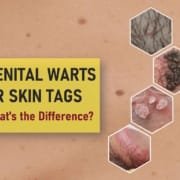Skin Cancer: Types, Symptoms, Diagnosis and Treatment
Skin cancer is a condition that affects millions of people globally. It occurs when there is an uncontrolled growth of abnormal skin cells. The key to managing skin cancer lies in early detection, understanding the types, causes, and symptoms, and knowing the available treatment options. This blog post aims to provide a comprehensive overview of skin cancer, its types, causes, risk factors, symptoms, diagnosis, treatment, and prevention.
What is Skin Cancer?
Skin cancer is the uncontrolled growth of abnormal cells in the skin’s outermost layer, the epidermis. It primarily results from DNA mutations caused by ultraviolet (UV) radiation from the sun or tanning beds. Unlike cutaneous malignant melanoma, which can spread to other parts of the body and become life-threatening, most skin cancers are localized and less likely to metastasize.
How Common is Skin Cancer?
The incidence of both non-melanoma and melanoma skin cancers has been rising over the past decades. Currently, there are between 2 and 3 million cases of non-melanoma skin cancer and 132,000 cases of melanoma skin cancer globally each year. One in every three cancers diagnosed is a skin cancer, and according to Skin Cancer Foundation Statistics, one in every five Americans will develop skin cancer in their lifetime.
As ozone levels deplete, the atmosphere’s protective filtering function weakens, allowing more solar UV radiation to reach the Earth’s surface. A 10% decrease in ozone levels could result in an additional 300,000 cases of non-melanoma skin cancer and 4,500 cases of melanoma annually. The global incidence of melanoma continues to increase, primarily due to recreational sun exposure and a history of sunburn.
Types of Skin Cancer
There are three major types of skin cancer:
- Basal Cell Carcinoma (BCC): This is the most common type of skin cancer. It originates in the basal cells, which are found in the lower part of the epidermis. BCCs usually appear as shiny, pearly nodules on sun-exposed areas like the face and neck.
- Squamous Cell Carcinoma (SCC): The second most common type, SCC, arises from the squamous cells, which make up most of the epidermis. SCCs can appear as scaly, red patches, open sores, or warty growths.
- Melanoma: Although less common, melanoma is the most dangerous type of skin cancer. It originates in the melanocytes, the cells responsible for producing pigment (melanin). Melanomas can develop from moles and often resemble black or brown spots with irregular borders.
Other less common skin cancers include:
- Merkel Cell Carcinoma
- Atypical Fibroxanthoma
- Cutaneous Lymphoma
- Dermatofibrosarcoma
Causes of Skin Cancer
Most skin cancers are caused by mutations in the DNA of skin cells induced by UV radiation. These mutations cause the cells to grow uncontrollably and form a mass of cancerous cells. The body’s natural immune surveillance often controls these early cancers, but when compromised, malignant cells may develop into tumors.
Is Skin Cancer Hereditary?
While most skin cancers result from UV exposure, genetics also play a role. Individuals with fair skin, light-colored eyes, and red or blonde hair are at higher risk. Some rare genetic syndromes can also increase the likelihood of developing skin cancer.
Risk Factors for Skin Cancer
Several factors can increase the risk of developing skin cancer, including:
- UV Exposure: Prolonged exposure to UV radiation from the sun or tanning beds is the primary risk factor. People living at high altitudes or near the equator are at greater risk.
- Fair Skin: Individuals with fair skin that burns easily are more susceptible to skin cancer.
- Immunosuppression: A weakened immune system, due to conditions like HIV/AIDS or medications like chemotherapy, can increase risk.
- Age: Older individuals are at a higher risk.
- Previous Skin Cancer: A history of skin cancer increases the likelihood of developing another.
Symptoms of Skin Cancer
Recognizing the signs and symptoms of skin cancer is crucial for early detection and treatment. Most basal cell carcinomas exhibit few, if any, symptoms. In contrast, squamous cell carcinomas can be painful. Both types of skin cancer may present as sores that bleed, ooze, crust, or refuse to heal. They typically start as slowly growing bumps on the skin, which may bleed after minor trauma. Both forms of skin cancer can have raised edges and central ulceration.
Basal Cell Carcinoma Symptoms
- Shiny, pearly bumps
- Pink growths with raised edges
- Reddish patches that may itch or crust
- Waxy, white, or yellow areas resembling scars
Squamous Cell Carcinoma Symptoms
- Scaly, red patches
- Open sores that don’t heal
- Raised growths with a rough surface
- Wart-like growths
Melanoma Symptoms
- Changes in an existing mole
- New, unusual growths or changes in the skin
- Asymmetry, irregular borders, color changes, increasing diameter, or evolving features in a mole
Common Sites for Skin Cancer
Skin cancer primarily develops on sun-exposed areas of the skin, such as the scalp, face, lips, ears, neck, chest, arms, and hands, and on the legs in women. However, it can also form in areas that rarely see the light of day, including the palms, beneath the fingernails or toenails, and the genital area.
Skin cancer affects individuals of all skin tones, including those with darker complexions. When melanoma occurs in people with dark skin tones, it is more likely to develop in areas not typically exposed to the sun, such as the palms of the hands and the soles of the feet. This highlights the importance of regular skin checks for everyone, regardless of skin color, to detect potential skin cancers in both common and uncommon areas.
Diagnosis of Skin Cancer
A dermatologist is usually the first point of contact for diagnosing skin cancer. Diagnosis involves:
- Skin Examination: Visual inspection by a dermatologist.
- Biopsy: A small sample of the suspicious area is removed and examined under a microscope.
Which Mole Can Lead to Skin Cancer?
Moles are typically harmless and rarely turn into skin cancer. However, when a mole does become cancerous, it develops into melanoma, a serious type of skin cancer.
A mole may be at risk of becoming melanoma if it shows certain changes. One such stage is known as a dysplastic nevus, which appears more irregular compared to a normal mole. Look for moles with:-
- Asymmetry: One half of the mole looks different from the other.
- Irregular Border: The edges are not smooth or uniform.
- Color Changes: The mole has various colors or changes in color.
- Increasing Diameter: The mole grows larger over time.
- Other Evolving Changes: Any other noticeable alterations in the mole’s appearance.
It’s important to note that moles do not transform into squamous cell carcinomas or basal cell carcinomas, which are other types of skin cancer. If you observe any of these signs in a mole, consult a dermatologist for further evaluation.
Staging of Skin Cancer
Basal Cell Carcinoma:- Stages range from zero to four with higher numbers indicating more aggressive cancers ,but most basal cell cancers do not need staging as they rarely spread beyond the skin. Larger tumors or those on sensitive areas like the ears, nose, and eyelids are more concerning.
Squamous Cell Carcinoma:- Staging is based on tumor size, depth, and involvement of nearby structures. Tumors larger than 2 cm, thicker than 2 mm, or involving nerve structures are considered more serious.
Treatment for Skin Cancer
Treatment options depend on the type, location, and size of the cancer, as well as the patient’s overall health. Common treatments include:
- Topical Medications: Used for superficial basal cell carcinomas. Examples include imiquimod (Aldara) and fluorouracil (5-FU).
- Electrodesiccation and Curettage (EDC): Scraping away the tumor and cauterizing the area.
- Surgical Excision: Removing the tumor along with some surrounding tissue.
- Mohs Micrographic Surgery: Removing the tumor layer by layer and examining each layer under a microscope.
- Radiation Therapy: Using radiation to destroy cancer cells, typically used for those who cannot undergo surgery.
- Other Treatments: Cryosurgery, photodynamic therapy, laser surgery, and oral medications like vismodegib (Erivedge) and sonidegib (Odomzo).
Prognosis and Survival Rate
The prognosis for nonmelanoma skin cancers is excellent. Basal cell carcinoma and squamous cell carcinoma are highly curable, with very low mortality rates. Early detection and treatment significantly improve outcomes.
Prevention of Skin Cancer
Preventing skin cancer involves protecting your skin from UV radiation:
- Use Sunscreen: Apply broad-spectrum sunscreen with an SPF of 30 or higher.
- Wear Protective Clothing: Hats, sunglasses, and long sleeves can protect your skin.
- Avoid Peak Sun Hours: Stay out of the sun between 9 a.m. and 3 p.m.
- Avoid Tanning Beds: Tanning beds are a significant risk factor for skin cancer.
Conclusion
Skin cancer is a common but highly treatable condition when detected early. Understanding the types, causes, symptoms, and treatments is essential for prevention and early intervention. Regular skin checks and protection against UV exposure are vital steps in reducing your risk of skin cancer. If you notice any unusual changes in your skin, consult a dermatologist promptly.










